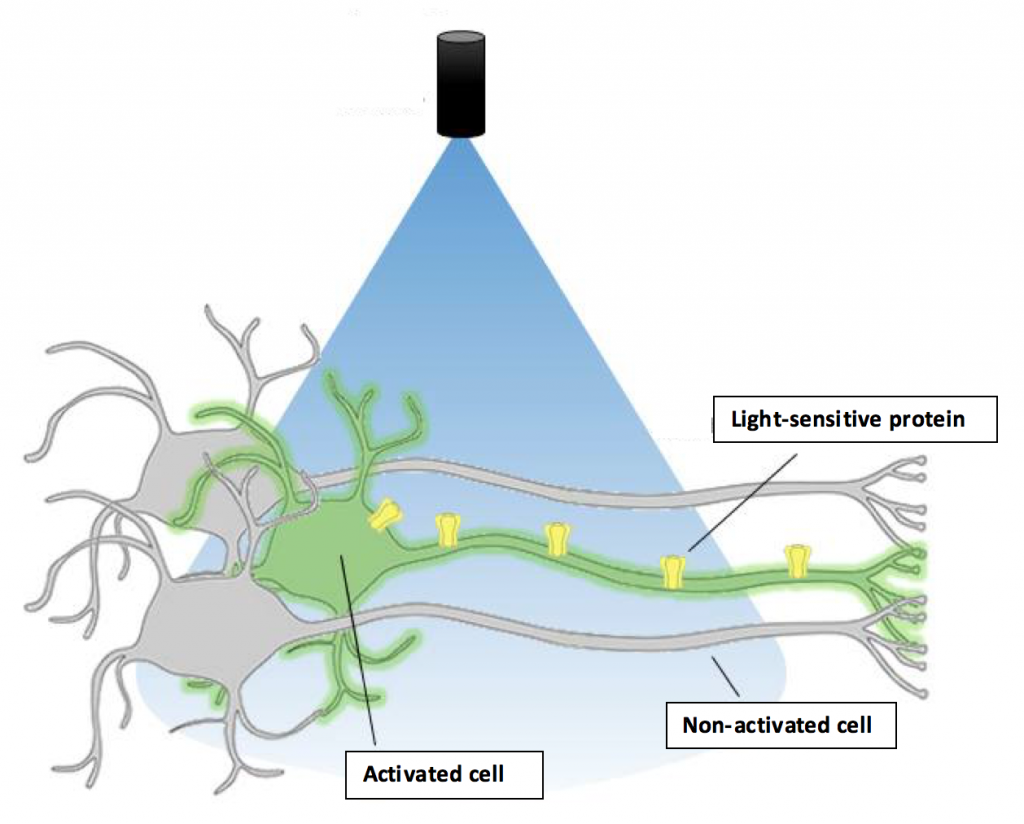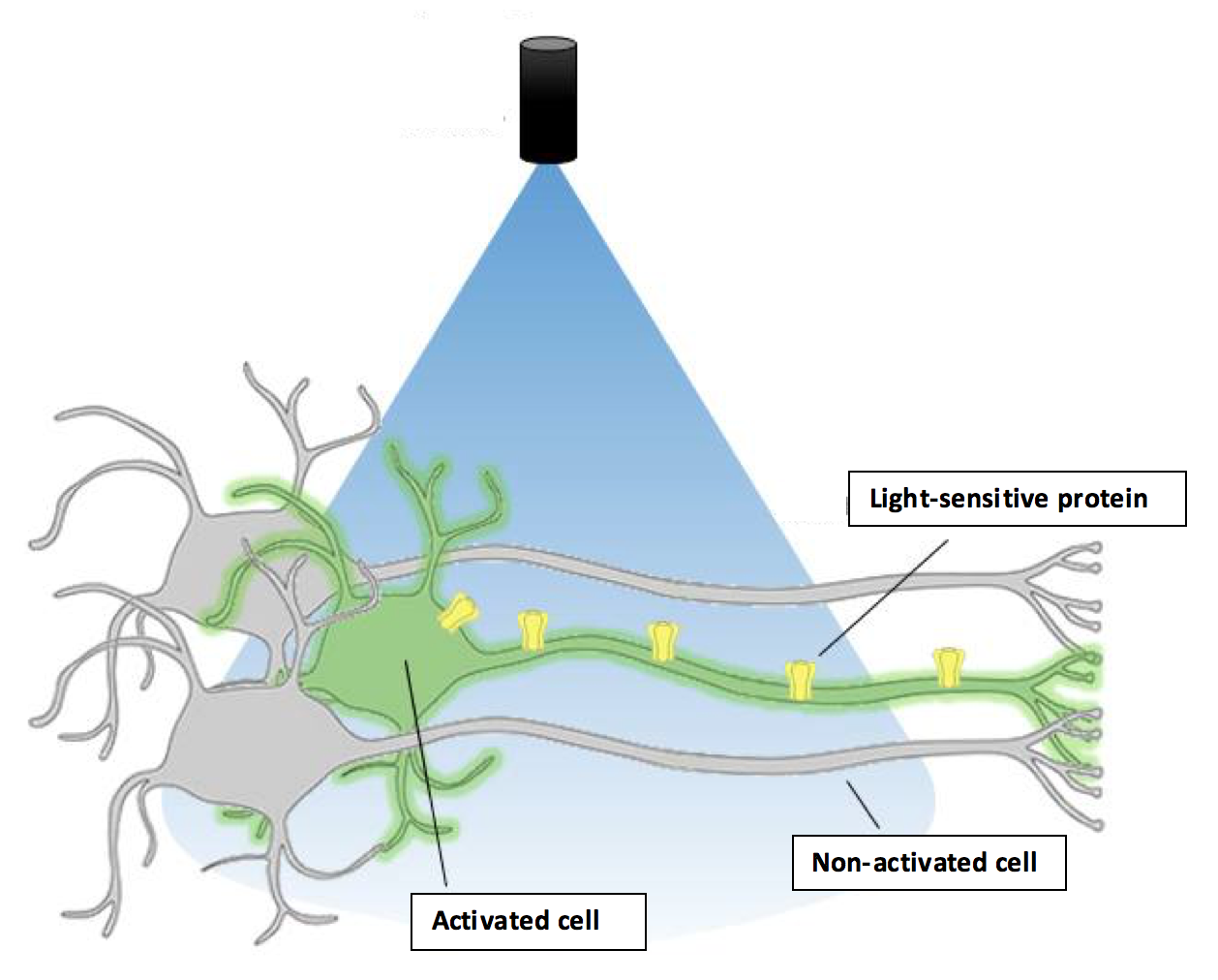This post is also available in Dutch.
You see it often in science-fiction films: brains controlled by a microchip for instance. But is this actually fiction? In mice, this is already possible using ‘optogenetics’.
In the film The Eternal Sunshine of the Spotless Mind, characters Joel and Clementine fall in love, without remembering that they had already done so before. In the film, a company is able to erase their client’s bad memories with the help of neuroscience. This is not yet possible in the real world, but did you know that it is for mice? Neuroscientists have discovered how to turn brain cells in mice on and off from a distance: optogenetics.
The inventors of this technique wanted the ability to control brain cells using light. The problem is that brain cells are not light sensitive. So how do you get them to react to a laser beam? By using certain proteins that do respond to light, like in your eye, and copying those eye cells to your brain. This is done by a special virus injected into the mouse brain that contains a genetic formula, which activates light sensitive cells. Then what? A laser beam is simply pointed at the mouse brain, causing the now light sensitive brain cells to give off a neural signal.
 Optogenetics: the blue light only activates those cells that express the light-sensitive proteins.
Optogenetics: the blue light only activates those cells that express the light-sensitive proteins.
Image edited by Lieke, license CC BY-SA.
Precision work
One advantage of optogenetics is that it is extremely precise. You can determine with great accuracy which cells to activate with light. Even the period of time that cells are activated can be fine-tuned. As soon as the light is switched on the cells begin to fire, and as soon as the light is switched off cell activity stops. Compare this method to medication for example, which is usually not aimed at a small group of cells, but for larger areas in the brain, and has a long lasting or prolonged effect.
By using optogenetics, neuroscientists are now able to research what the functions of certain cells are and can piece together different brain networks. By activating or deactivating certain cells in specific brain regions a mouse will, for instance, begin to walk, or might suddenly start eating. It is also possible to make the mouse remember something even if they have never come across that something before. It is even possible to change a negative emotion linked to a specific memory, into a positive emotion. Unbelievable, right?
In the future
New developments in optogenetics for humans are now in full swing. RetroSense Therapeutics in Michigan state, in the US, has begun clinical trials to treat an eye disease. In time, it might also be possible to treat neurological disorders such as epilepsy and Parkinson’s with optogenetics. But for now, erasing people’s memories, like in the film The Eternal Sunshine of the Spotless Mind, will still be science-fiction.
This blog was written by guest blogger Lieke Hofmans. Lieke is a PhD student at the Donders Institute where she researches the role of dopamine in cognitive functioning. In her spare time you can often find her sprinting around the race track.
Edited by Jeroen. Translated by Marpessa.
